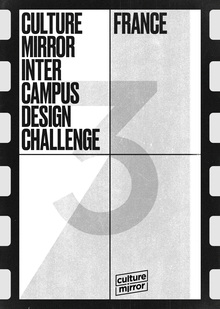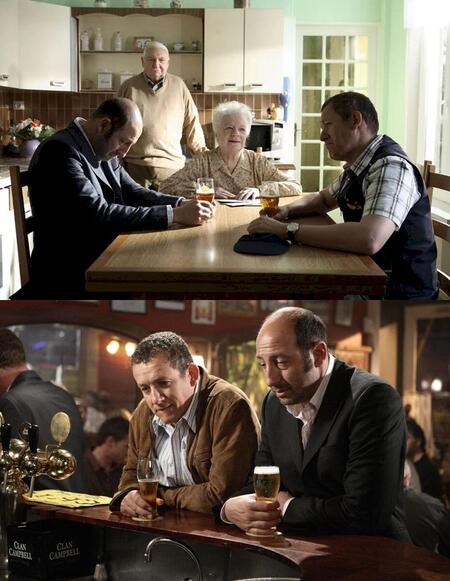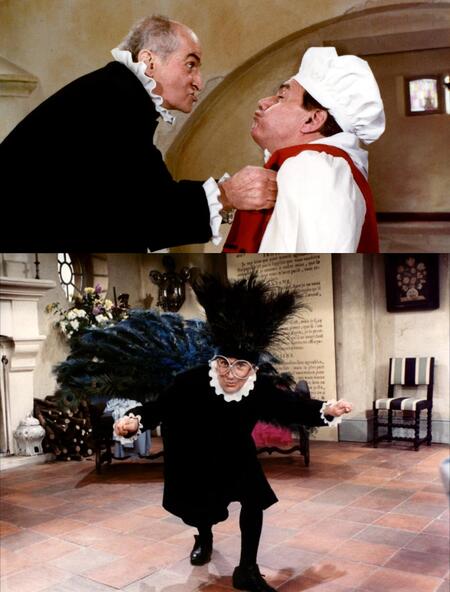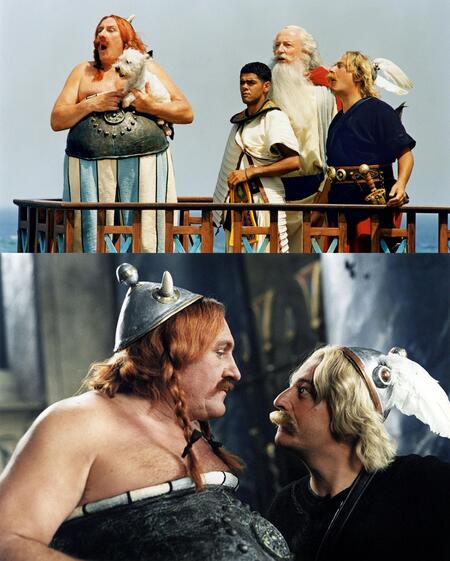
Exclusively for HSE, Intuit Lab, and CAFA students. Read more 🔗 about the competition
The contest has two rounds. Submissions are currently open for Round 1, assessed by national juries, and the same projects will carry through to Round 2, judged by the international jury.
step 1 / choose a movie: French watchlist

Amélie (2001, Jean-Pierre Jeunet) // Le Fabuleux Destin d’Amélie Poulain (2001, Jean-Pierre Jeunet)
Amélie depicts a popular, idealized, and poetic vision of Paris, magnified by Audrey Tautou’s strange, ethereal face. More than its overall plot, the film is characterized by an astonishing gallery of characters whose destinies intertwine. Visually, Jean-Pierre Jeunet displays undeniable mastery: meticulous cinematography, a wide variety of graphic styles, frenetic pacing. An invitation to dream, Amélie is also a parable about coming of age and the need to confront life.

Welcome to the Sticks (2008, Dany Boon) // Bienvenue chez les Ch’tis (2008, Dany Boon)
Compared to India, Russia, China, and Brazil, France is a small country. But it contains major regional disparities and identities. That is the theme of Bienvenue chez les Ch’tis. A «Ch’ti» is an inhabitant of northern France, a region far removed from clichés of Parisian glamour or the Riviera. It is cold, rainy, and unemployment and poverty are more prevalent. Locals speak with a strong accent and a dialect infused with Flemish. Yet they are known for their warmth, generosity, and openness. Formally very classic, Bienvenue chez les Ch’tis is a comedy of manners led by well-known actors, addressing the question of prejudice, how it can be overcome, and the meaning of human solidarity.

The Miser (1980, Louis de Funès and Jean Girault) // L’Avare (1980, Louis de Funès and Jean Girault)
L’Avare is the only film directed by Louis de Funès. In 1980, the comedian was at the peak of his popularity. For decades, he had embodied the same character: a grumpy, grimacing, mean, and ridiculous clown, portrayed in numerous films to great success. By adapting Molière’s play The Miser, the actor — who would die three years later — returned to the roots not only of his career but also of French comedy in general. Molière is the most famous French playwright worldwide, with his plays staged in every country for over 350 years. He is the artist who elevated humor to an art form as noble and serious as tragedy. Formally, de Funès’ L’Avare is both classical (costumes and period sets) and inventive (bridging cinematic language with filmed theater), reflecting the timelessness and modernity of the work.

The Artist (2011, Michel Hazanavicius) // L’Artiste (2011, Michel Hazanavicius)
The Artist was a daring gamble: a large-scale production with a significant budget and an international star (Jean Dujardin) for a silent, black-and-white film. Its success proved that cinema is not bound solely by marketing rules. It is both a return to the roots of cinema and an homage from the early 21st century to the early 20th century, while addressing contemporary themes: the passage of time, the role of women in the film industry, and more. With three Golden Globes, five Césars, and six Oscars, The Artist is one of the most awarded films in the history of French cinema.

Asterix & Obelix: Mission Cleopatra (2002, Alain Chabat) // Astérix et Obélix : Mission Cléopâtre (2002, Alain Chabat)
Astérix et Obélix is a French comic book series of extraordinary, enduring popularity for nearly 70 years. Featuring «indomitable Gauls, ” Astérix pokes fun at the chauvinism of the 1950s–60s in a France still traumatized by WWII defeat and occupation. The comics are defined by fast pacing and layered humor: slapstick, fights, colorful characters, wordplay, and sophisticated cultural references. Alain Chabat’s successful adaptation lies in his ability to reproduce, sometimes panel for panel, the spatial and narrative structure of the comic while carving out space for cinematic creativity. A star-studded cast amplified the film’s exuberant spirit. Finally, high-quality special effects gave Mission Cléopâtre a distinctive character at a time when VFX were more commonly used for action films than comedies.
step 2 / translate and reimagine
Ask yourself: «If the message and spirit of this film were turned into a contemporary „Brand®“ in my country, what would it look like?» The name of the movie could be changed if necessary for the purpose of the brand you want to create.
Analyze the core DNA of the story — its emotion, symbolism, conflict, and values. Then reinterpret it within your own cultural environment, while keeping its original essence alive.
Define: • The brand positioning (what it stands for) • The narrative promise (what it conveys emotionally or socially) • The signature or tagline
step 3 / design the identity
Create the visual and editorial world of your film-brand:
• Logo and graphic universe (color palette, typography, layout) • Visual and editorial tone • Main campaign poster or rebranded film cover • Social media content (3–5 posts minimum)
Optional but encouraged: merchandising mockups, teaser video, or a short 2-minute trailer. You are free to explore any format — from digital to print to motion — as long as your storytelling remains coherent and culturally meaningful.
step 4 / prepare the presentation
Compile your project into a clear and engaging presentation:
• 1 brand strategy note (vision, values, positioning, adapted title) • 1 logo and full visual identity system (colors, typography, moodboard) • 1 poster or key visual • 3–5 social media posts • Optional: 1 short trailer (max 2 min) • 1 presentation deck (max 30 longread blocks) uploading here on «create a project»
when creating your project on the platform, please name it using the following format:
Culture Mirror: [Movie Name]
step 5 / submit and get featured
Submit your project on your film country’s landing page.
Individual submissions only.
Final deadline: January 15, 2026.
After the first evaluation, five projects per country will be shortlisted.
A second round of juries will then select the three best international interpretations per country, and finally, one winning project will be chosen in March 2026.
The 15 finalist projects will form the basis of a traveling exhibition across all five countries.
make sure your project includes both tags:
«identity & branding» «intuit lab x hse art and design school x cafa»
contacts
Info: info@dafes.org Technical support: support@dafes.org
Regulations of the HSE x Intuit Lab x CAFA: Culture Mirror Intercampus Design Challenge — by participating in this contest, you agree to these Regulations in full.